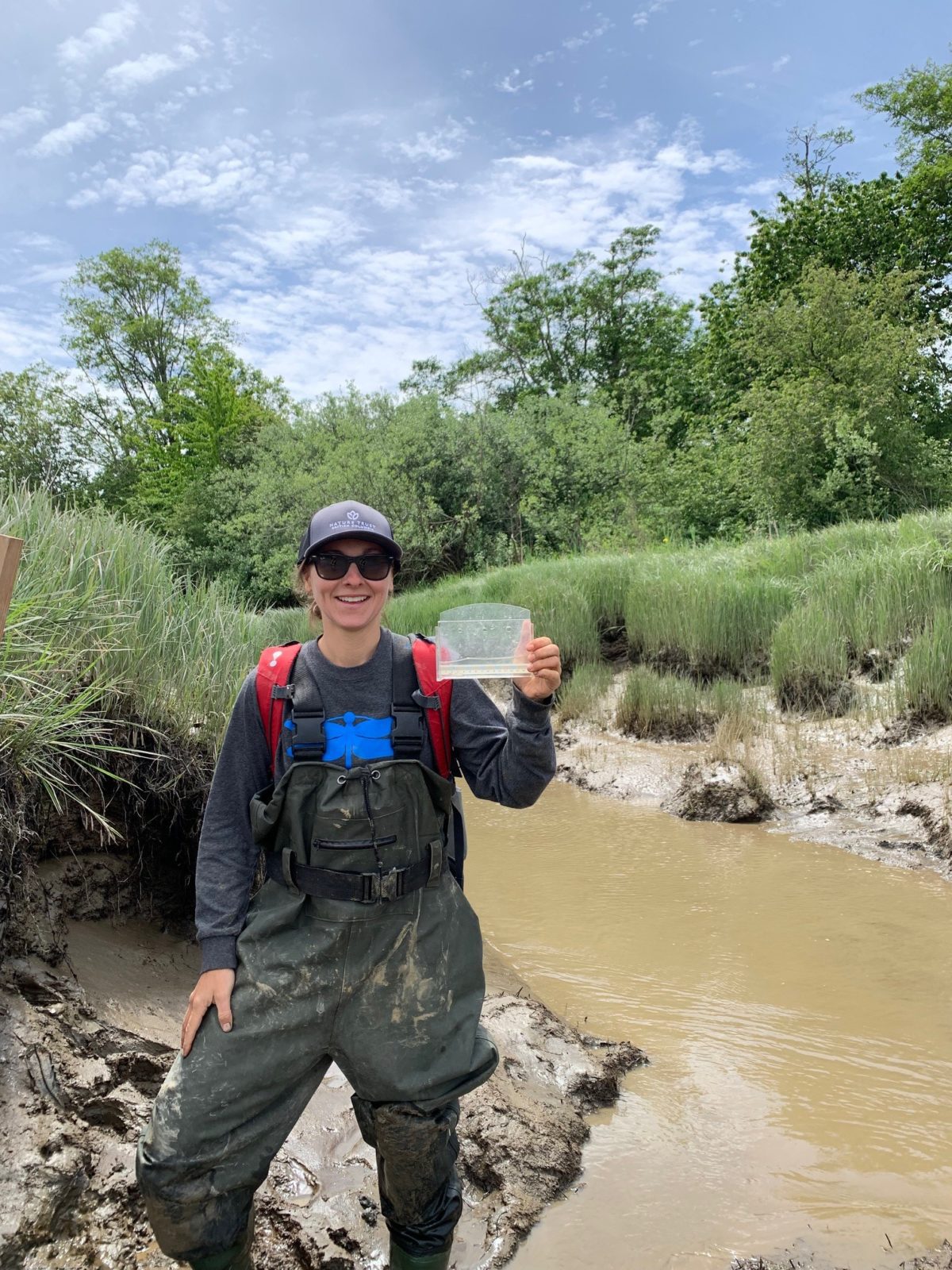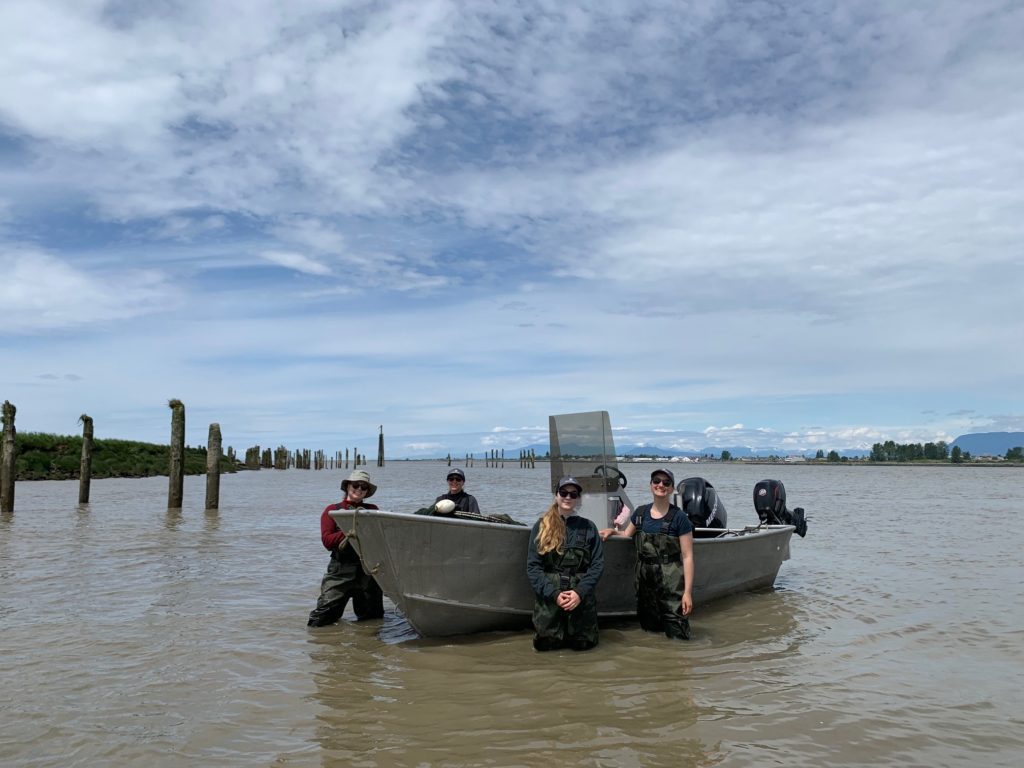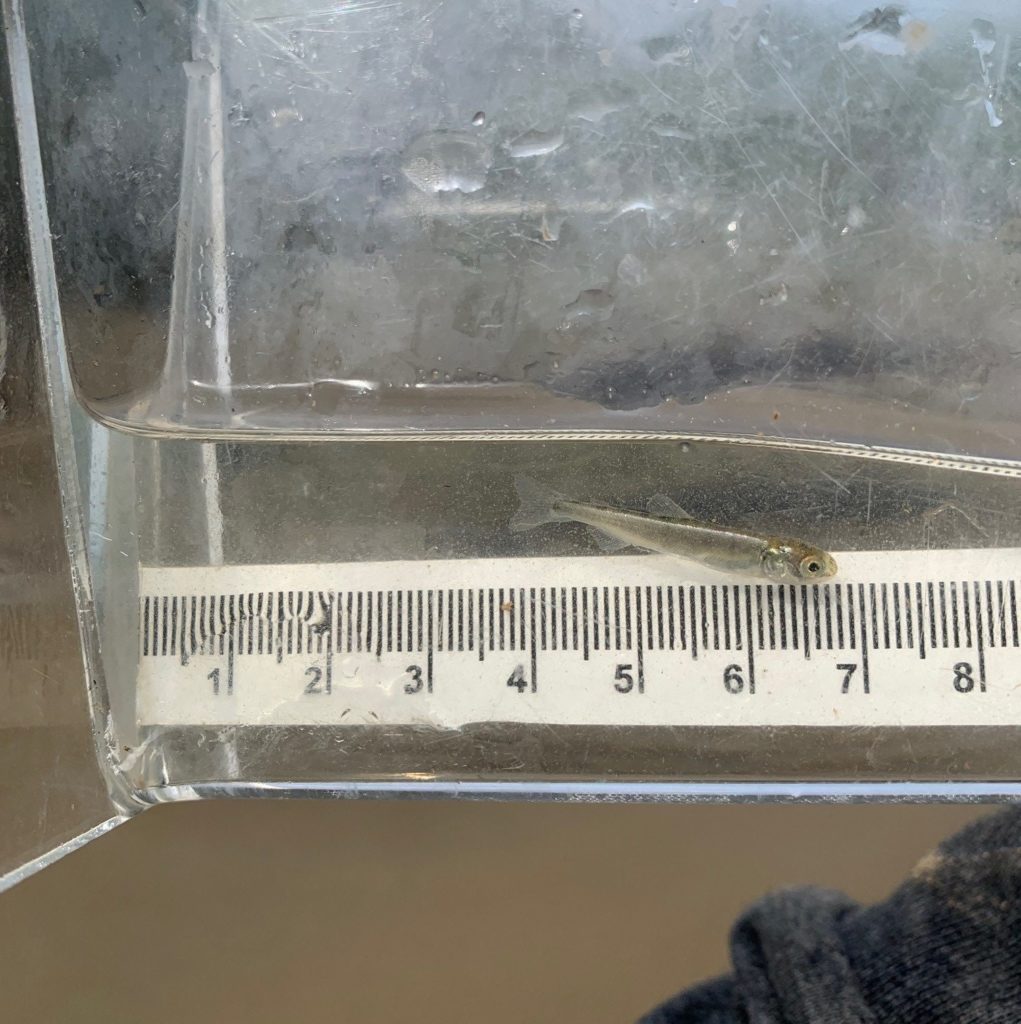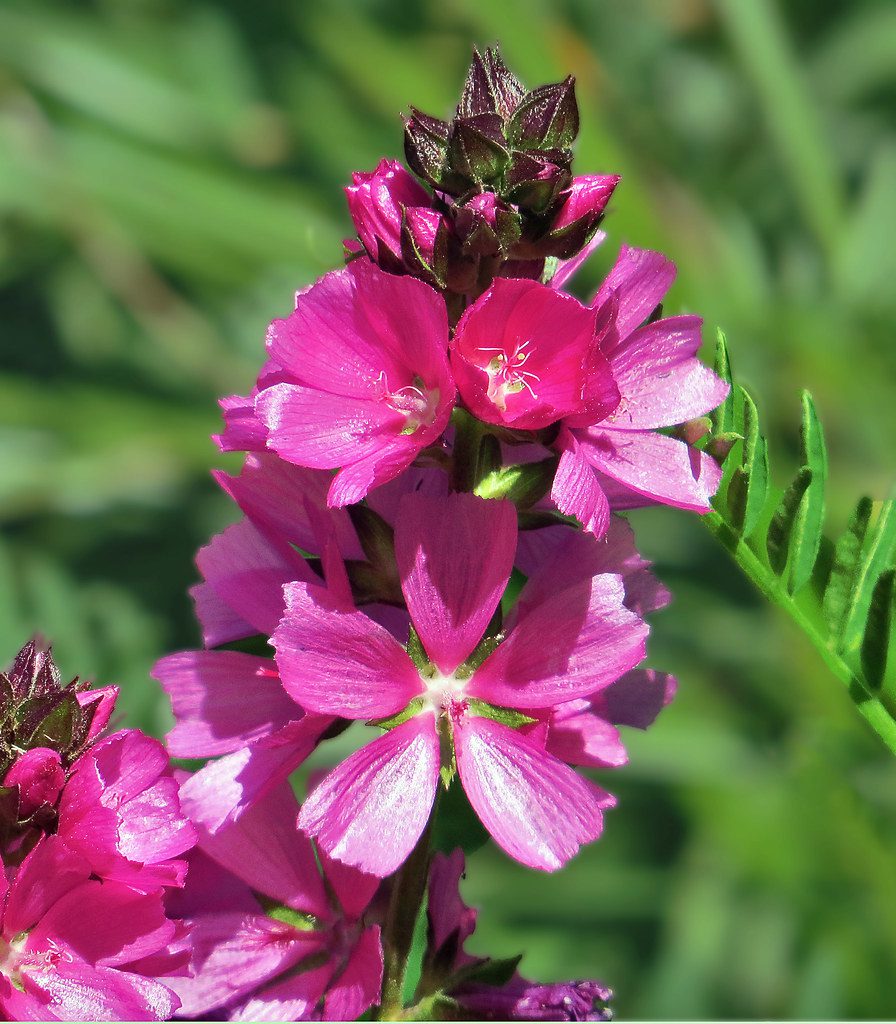
By Maureen Parker, South Coast Conservation Field Crew
The South Coast Conservation Crew got their hands and waders dirty while fish sampling on the Fraser River Estuary!
Organized with Jessica Bayley from Ducks Unlimited Canada (DUC), this exciting opportunity had the crew trudging through muddy tidal flats to reach a stream channel adjacent to The Nature Trust’s Harlock Island conservation area. This trip was to monitor the presence of juvenile salmon in the channel as part of the Alaksen National Wildlife Area (NWA) Tidal Restoration Project being carried out by the Raincoast Conservation Foundation in partnership with DUC, the Tsawwassen First Nation and the Lower Fraser Fisheries Alliance.

Since 2016, DUC and Raincoast have been completing large-scale restoration projects in the Fraser River Estuary. Previous projects have seen sections of the Steveston and North Arm Jetties breached in order to encourage the natural movement of freshwater, sediment, and salmon smolts into the safety of the neighbouring estuary. Funded by the British Columbia Salmon Restoration and Innovation Fund (BCSRIF), this project has the goal of restoring the connectivity of the tidal marsh system of the Fraser River Estuary for important salmon populations. The proposed project will include the breaching of approximately 50m2 of a dike situated along the NWA, near our Harlock Island conservation area. Jessica was leading part of a joint Raincoast and DUC field crew that has been collecting baseline data for this project by sampling at the proposed breach and nearby channels. They have also been monitoring water quality, water salinity and marsh vegetation to note any changes after the breaches.
The Nature Trust’s South Coast Conservation Crew were delighted to be invited out with one of our partners in conservation to learn about the project on this beautiful estuary. The day included a boat ride from Captain’s Cove Marina out to Harlock Island where the crew learned how to identify different salmon smolt species and were taught how to set up a specialized fyke net to capture them. Over the course of the day the crew identified the passage of Chum Salmon as well as Three-spined Sticklebacks and one lone Peamouth!

Before these restoration projects there was only one possible exit that juvenile salmon could take to enter the safety of Sturgeon Bank on their way out to the open water of the Georgia Strait. Increasing the connectivity of the Fraser River Estuary has allowed thousands of juvenile salmon to acclimate and grow in the brackish water, ultimately increasing their chances of survival when heading out into the much deeper and more dangerous strait.

Henderson’s Checkermallow, Photo: Richard Griffin
Since the sampling was being completed in a channel off The Nature Trust’s Harlock Island conservation area, the crew got to visit this otherwise difficult to access site. Situated just outside of the Alaksen National Wildlife Area, Harlock Island is an intertidal and freshwater habitat. Aside from providing important brackish habitat for juvenile salmon, this mudflat ecosystem acts as prime waterfowl feeding and loafing habitats at low tide. While they were there, the Crew even spotted a Blue-listed species on our property – a rare native perennial plant called Henderson’s Checkermallow!
Editorial Note: November is Philanthropy Month, as we lead up to Giving Tuesday on November 29. Donations will go to supporting our Field Crews, so contribute now to their fantastic work!
